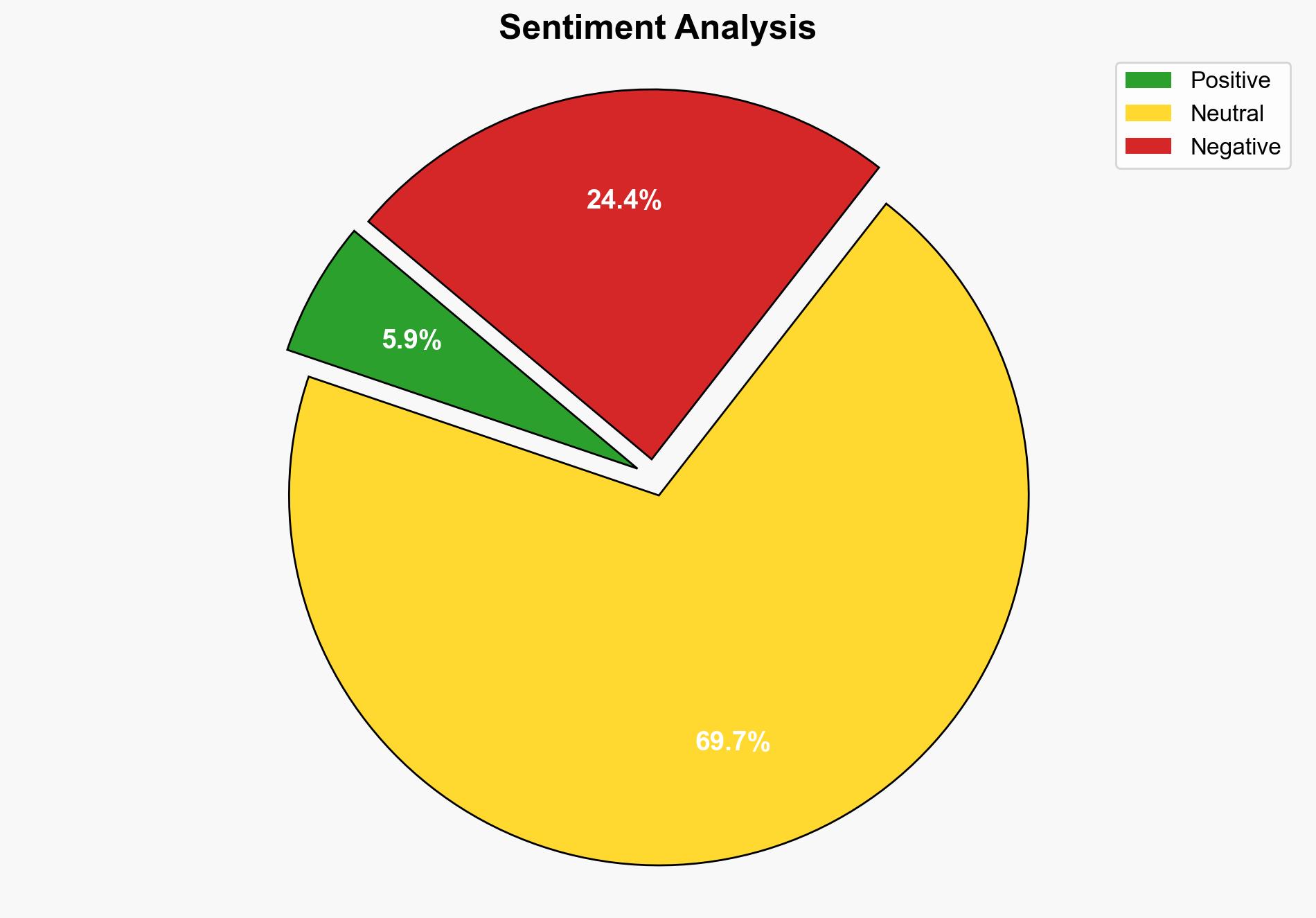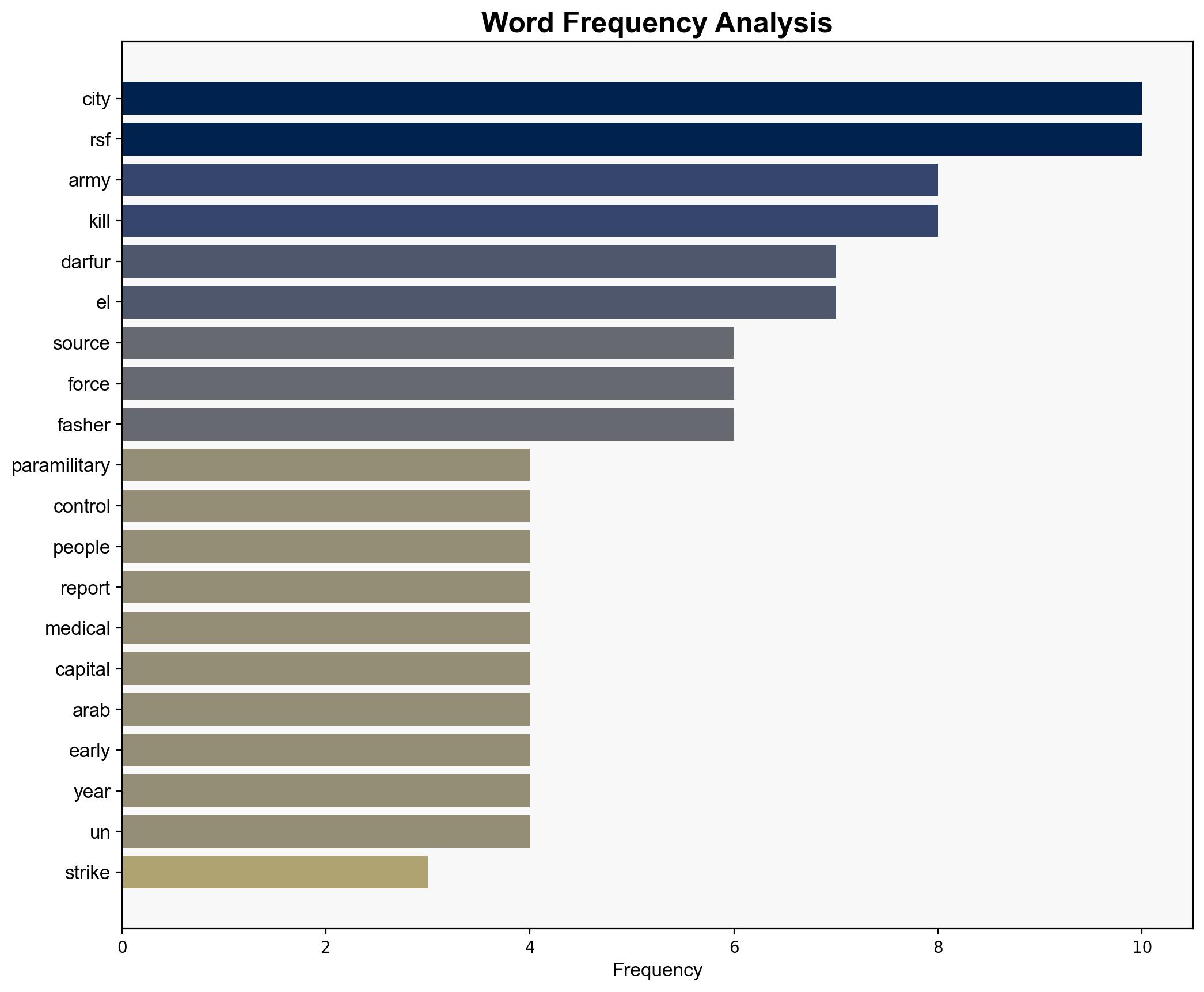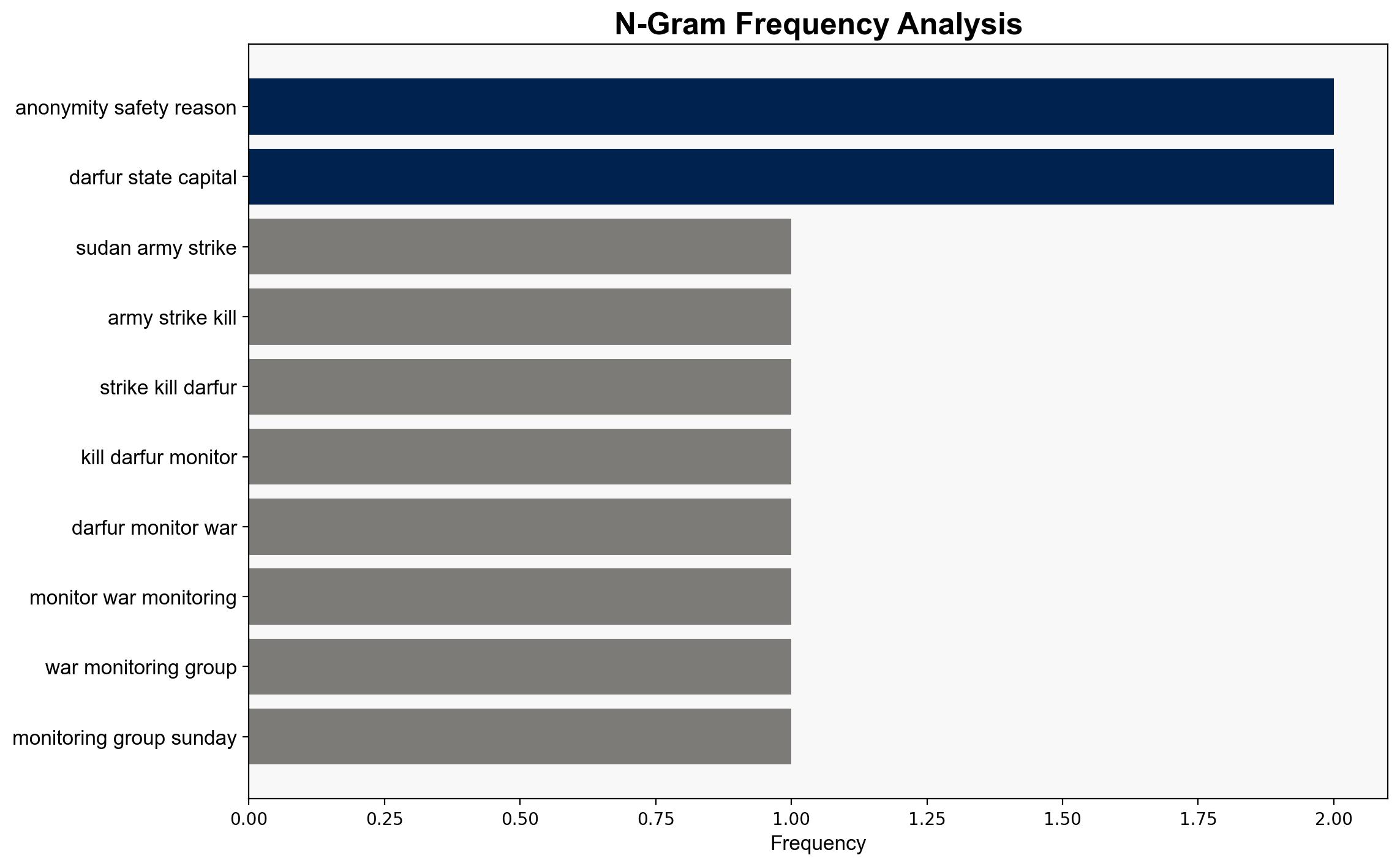Sudan Army Strike Kills At Least 12 In Darfur Monitors – International Business Times
Published on: 2025-08-31
Intelligence Report: Sudan Army Strike Kills At Least 12 In Darfur Monitors – International Business Times
1. BLUF (Bottom Line Up Front)
The ongoing conflict between the Sudanese Army and the Rapid Support Forces (RSF) in Darfur has escalated, resulting in significant civilian casualties and humanitarian crises. The most supported hypothesis is that the Sudanese Army is intensifying its military operations to regain control over strategic areas held by the RSF. Confidence level: Moderate. Recommended action: Immediate diplomatic intervention to de-escalate tensions and facilitate humanitarian aid access.
2. Competing Hypotheses
1. **Hypothesis A**: The Sudanese Army is conducting targeted strikes to dismantle RSF’s control over key regions, aiming to regain strategic advantage and stabilize the area.
2. **Hypothesis B**: The Sudanese Army’s strikes are part of a broader campaign of intimidation and ethnic cleansing, aiming to weaken RSF support among local populations and consolidate power through fear.
Using ACH 2.0, Hypothesis A is better supported by the evidence of targeted strikes on RSF-controlled areas and strategic infrastructure, such as clinics and water supplies. Hypothesis B is less supported due to lack of direct evidence of ethnic targeting in this specific incident, though historical context suggests it remains a plausible underlying motive.
3. Key Assumptions and Red Flags
– **Assumptions**: The Sudanese Army has the capability and intent to conduct precise military operations. RSF’s control over regions is a significant threat to the Sudanese Army’s strategic interests.
– **Red Flags**: Reports rely heavily on anonymous sources, raising questions about the accuracy and potential bias. The communication blackout limits independent verification of events.
– **Blind Spots**: Lack of real-time intelligence from the ground due to restricted access and communication disruptions.
4. Implications and Strategic Risks
The conflict poses significant risks of further humanitarian crises, including famine and mass displacement. Escalation could destabilize the broader region, potentially drawing in neighboring countries. The RSF’s formation of a parallel government could lead to prolonged conflict and fragmentation of Sudan.
5. Recommendations and Outlook
- Engage in diplomatic efforts to broker a ceasefire and open corridors for humanitarian aid.
- Monitor the situation closely for signs of escalation or ethnic targeting.
- Scenario Projections:
- Best: Successful negotiations lead to a ceasefire and humanitarian relief.
- Worst: Escalation into full-scale ethnic conflict, with regional spillover.
- Most Likely: Continued skirmishes with intermittent humanitarian access.
6. Key Individuals and Entities
– Nathaniel Raymond (Yale University Humanitarian Research Lab Executive Director)
7. Thematic Tags
national security threats, regional conflict, humanitarian crisis, geopolitical instability





